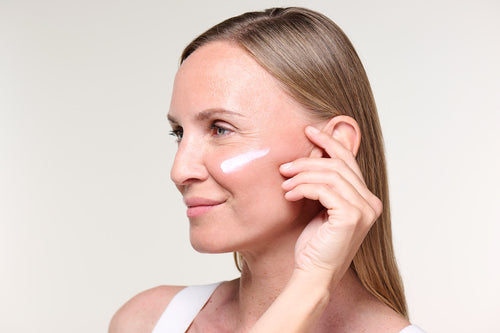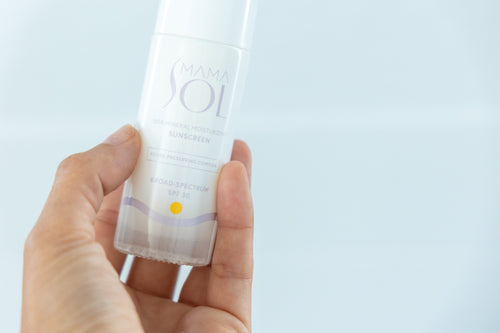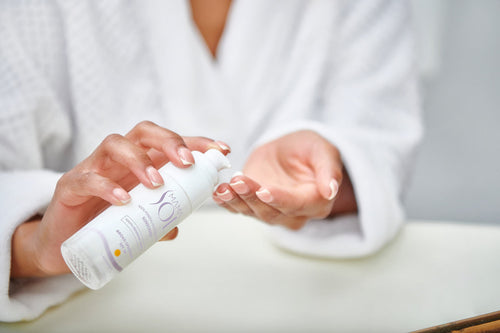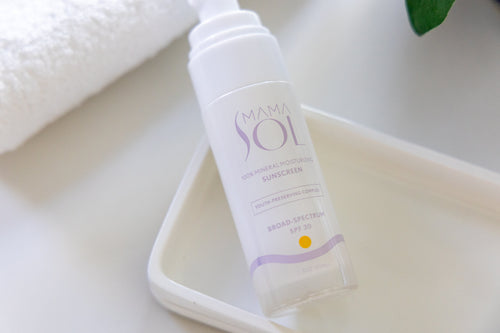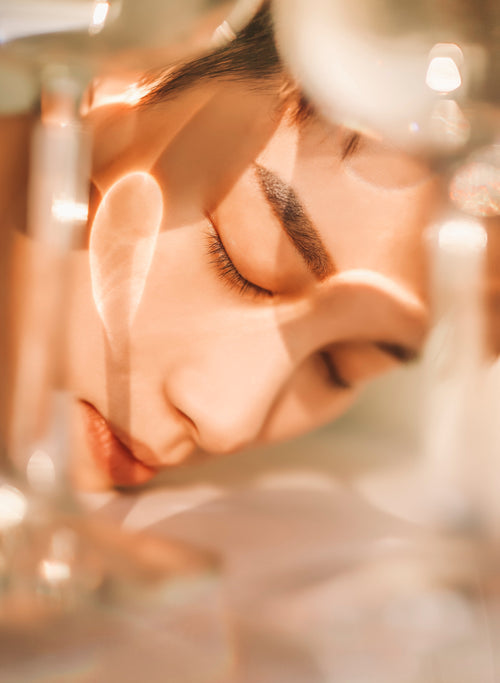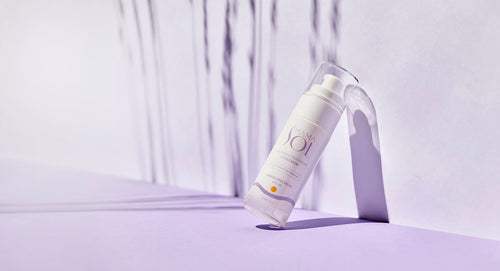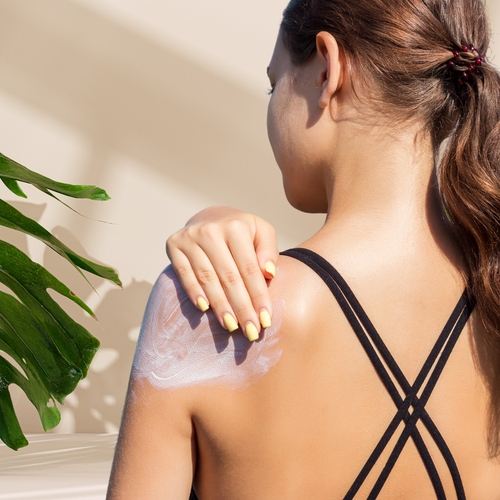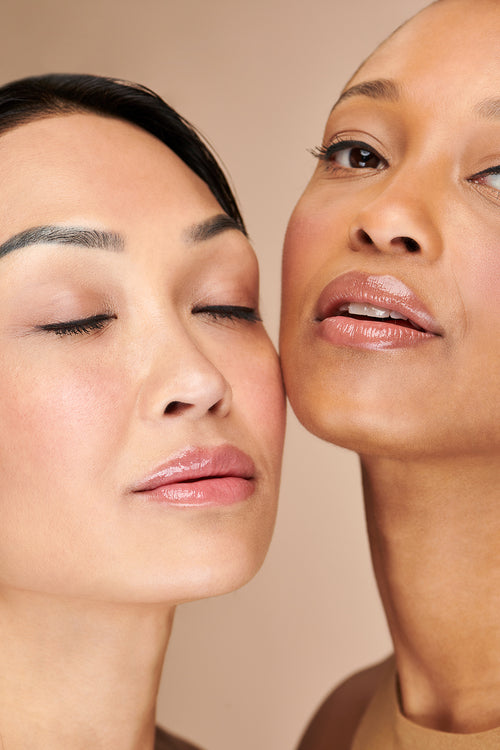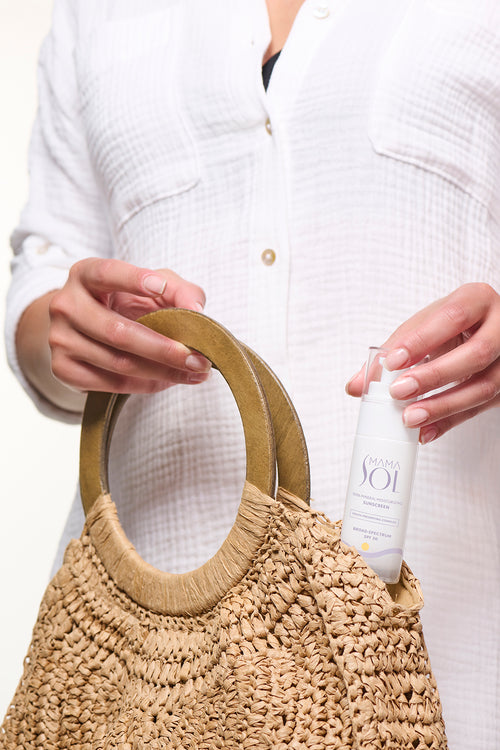Why Is Sunscreen Essential?
You hear it all the time: “Don’t go outside without sunscreen! Don’t leave the house without it!” But why is sunscreen essential every day for everyone (including babies 6 months and up), even when it’s cloudy outside? Here’s why sunscreen needs to become a part of your daily skin regimen.
When you’re outside or exposed to sun, your skin is vulnerable to the sun’s radiation, which is energy given off by rays of light. UV light is invisible to humans, but UVA and UVB rays can damage the DNA in your skin cells, cause premature aging and wrinkles, and lead to skin cancers like melanoma. Plus, no one likes being red and achy from sunburn.
The American Academy of Dermatology (AAD) recommends using sunscreen that’s: 1) SPF 30 or higher, 2) broad-spectrum (meaning it protects from both UVA and UVB rays), and 3) water-resistant. The two main types are mineral and chemical sunscreens, but not all sunscreens are created equal.
Mineral sunscreens, also known as physical sunscreens, act like a protective layer on top of your skin to block UV rays. Because they’re usually more moisturizing and aren’t absorbed by skin, mineral sunscreens tend to be better for sensitive and acne-prone skin.
Chemical sunscreens penetrate your skin and absorb UV rays like a sponge, transforming them into heat. Newer hybrid formulas combine the benefits of both mineral and chemical sunscreens.
You can choose the best mineral or chemical sunscreen based on your skin type and needs (normal, combination, oily, dry, sensitive, acne-prone, etc.) and whether you’re swimming or exercising (for more water-resistant formulas). Sunscreens come in a variety of formulas, from solid stick and liquid to aerosol spray and oil.
Keep an eye out for reef-safe sunscreens, especially if you’re using sunscreen in the ocean/bodies of water, to prevent coral bleaching and damage. Take extra care when you’re near water, sand, and snow since they reflect the sun’s rays and increase the chance of sunburn and skin damage.
Let’s Talk UV Rays
Let’s break down some of the most common sun protection and skincare acronyms. UV (ultraviolet) light comes from the sun and objects like tanning beds. Radiation is how much energy is emitted from a source (the sun, in this case) so UV rays differ in wavelength and energy levels.
UVA (ultraviolet A): UVA (aging) rays are longer in wavelength, which changes how exposure to them affects your skin and body. UVA rays penetrate more deeply into your skin and cause skin damage over time that leads to tanning, skin aging, and premature wrinkles.
UVA rays make up 95% of the UV radiation that reaches Earth, but it’s essential to block both types and protect your skin.
UVB (ultraviolet B): UVB (burning) rays are shorter in wavelength than UVA rays but have slightly more energy. UVB rays cause sunburn and damage the DNA in your skin cells.
P.S. There’s a third type of UV rays, called UVC rays—they have the highest energy level of all three, but don’t reach us here on Earth’s surface.

(Photo by Connor McSheffrey on Unsplash)
Mineral Sunscreens Physically Block UV Rays
A mineral sunscreen is often called a physical sunscreen because it acts like a shield. Mineral sunscreens contain UV filters that sit on top of the skin to physically block and reflect the sun’s UVA and UVB rays, giving you broad-spectrum protection. You can also easily apply mineral sunscreen on top of other skincare products.
Zinc oxide and titanium dioxide are the main active ingredients in mineral sunscreen. One of the major pros of mineral sunscreen is that mineral sunscreens are generally better for sensitive and acne-prone skin, because they tend to be less irritating and more moisturizing. They’re also immediately effective once applied, though it’s recommended that you apply mineral sunscreen 15 minutes before sun exposure.
It's recommended that children 6 months and older wear sunscreen; mineral sunscreens are less likely to irritate sensitive baby skin, since they usually only contain zinc oxide and titanium dioxide as active ingredients.
Since mineral sunscreens act as a physical barrier between your skin and UV rays, formulas tend to be thicker in texture than the opaque or translucent spray you often get with chemical sunscreens. Some worry that mineral sunscreen will leave a white cast on their skin. While that may be true for some brands, Mama Sol’s silky, lightweight 100% mineral sunscreen becomes translucent on skin when blended.
Mama Sol’s moisturizing 100% mineral formula goes on white so you can see exactly where you’ve applied it, then blends seamlessly into your skin with the warmth of your fingers. No white cast here!
Reapply mineral sunscreen at least every two hours (we aim for every 80 minutes or so). It’s important to reapply more often right after swimming, sweating, or toweling off since most mineral sunscreens are generally less water-resistant than chemical formulas designed specifically for being in the water/exercising.
Chemical Sunscreens Absorb UV Rays
Chemical sunscreens, which make up a large majority of what you find in stores and online, work by penetrating your skin, absorbing UV rays like a sponge, and then transforming them into heat via a chemical reaction. The heat then dissipates from the skin.
Chemical sunscreen UV filters and active ingredients include oxybenzone, avobenzone, octisalate, octocrylene, homosalate, and octinoxate, However, most chemical sunscreens aren’t reef-safe and their active ingredients can be more irritating for those with sensitive or acne-prone skin.
There’s no such thing as waterproof sunscreen, since sweat and water remove sunscreen from your skin. However, you’ll find more water-resistant formulas and sport formulas when it comes to chemical sunscreens.
The U.S. Food and Drug Administration (FDA) specifies how long sunscreen will stay on wet skin; sunscreens must undergo testing before they earn the water-resistant designation. Water-resistant chemical sunscreens stay effective for up to 40 minutes (water-resistant) or 80 minutes (very water-resistant) the water. After that, you need to reapply.
Even if your skin stays dry while using a water-resistant sunscreen, you’ll need to reapply every 2 hours.
Some worry that ingredients used in chemical sunscreens, such as oxybenzone, are harmful since they’re absorbed by the skin and can enter the bloodstream. If that’s a concern, dermatologists recommend using a mineral sunblock/sunscreen since it can’t be absorbed by the skin.
Common chemical sunscreen ingredients such as oxybenzone may bleach and damage coral reefs, which is why some major destinations such as Hawaii have banned the use of oxybenzone.

(Photo by Vasiliki Theodoridou on Unsplash)
Let’s Compare: Mineral versus Chemical Sunscreens
While the U.S. Food and Drug Administration (FDA) regulates sunscreen products, it hasn’t ruled on whether mineral or chemical sunscreens are better. Any sunscreen is better than no sunscreen, so it’s up to you to decide what your skin needs.
Both mineral and chemical sunscreens are effective against UV radiation when used properly as directed, meaning the most important thing is applying at least 15 minutes before sun exposure and regular reapplication every two hours or more often, especially when exercising, sweating, swimming, or toweling off. For example, if you’re swimming while using a water-resistant sunscreen, you’ll need to reapply every 40 or 80 minutes as directed.
Mineral sunscreens are often recommended by dermatologists for those with sensitive or acne-prone skin since the formula sits directly on top of your skin and isn’t absorbed. As of 2021, the FDA ruled that zinc oxide and titanium dioxide (the two main actives in mineral sunscreen) are generally recognized as safe and effective active ingredients in sunscreen.
When it comes to chemical sunscreens, the FDA states that additional data is needed for many formulas’ active ingredients, such as oxybenzone and octinoxate, to be ruled generally recognized safe and effective.
It's also helpful to note that the Environmental Working Group (EWG) recommends avoiding chemical sunscreens with oxybenzone because of concerns that this ingredient may disrupt hormones and cause skin reactions. However, the FDA proposal doesn’t mean that those active ingredients are deemed unsafe—just that additional safety data is needed.

(Photo by City of Gold Coast on Unsplash)
Debunking Sunscreen Myths + Misconceptions
You can absolutely get sun damage on cloudy, windy, and cool days—even when it’s extremely overcast. UV radiation is not the same thing as temperature; on cloudy days, UV radiation can be even more intense due to reflection off the clouds.
Even though higher SPF (sun protection factor) seems to suggest more protection and effectiveness, you shouldn’t use your sunscreen to extend the amount of time you spend in the sun. SPF has to do with how much protection you get from the sunscreen, not how long it lasts.
Higher SPF doesn’t mean you don’t need to reapply as often. No matter what the SPF number on your sunscreen says, sunscreen only works for up to 2 hours so you’ll have to reapply at the same frequency.
If you’re already tan or are using self-tanner to fake a tan, you can absolutely cause damage to your skin by skipping on sunscreen and sunblock.
There’s no such thing as waterproof sunscreen. Sweat and water wash sunscreen from your skin, so the FDA doesn’t allow manufacturers to label them as waterproof anymore. You’ll find sunscreens labeled water-resistant for up to 40 or 80 minutes.

(Photo by Matheus Vinicius on Unsplash)
Practice Safe Sun
Sunscreen choice comes down to your personal preferences and needs. It’s ideal to use mineral or chemical sunscreen in combination with other methods of sun protection such as sunglasses, UPF-fabric hats and clothing, umbrellas, shade, and avoiding exposure when the sun’s rays are the strongest. You may even want to look for sunscreen formulas with hydrating/moisturizing benefits, skin-evening or redness-reducing tints, or skin-smoothing properties.
Always check the expiration date on any sunscreen you already own, and toss out ones that are already expired—that’s one thing you don’t want to mess with.
Want to be proactive about sun protection? Make an appointment with a dermatologist for an annual full-body skin check. The most innocent-seeming sunspots or moles can change in size or shape without you realizing it, and early detection is the key to catching and preventing skin cancers from becoming deadly.
For more info, check out the Skin Cancer Foundation’s All About Sunscreen info page, the American Academy of Dermatology Association’s Sunscreen FAQ and quick sunscreen selection infographic, and of course Mama Sol’s 100% Mineral Moisturizing Sunscreen SPF 30 to get your sun protection on.





